Time: 11:30AM – 3:00PM
Location: Downstream from Gross Reservoir
South Boulder Creek 10/28/2024 Photo Album
As October’s mild weather streak lingered for one final day, I knew colder temperatures were just around the corner. With a dip in the forecast beginning Tuesday, October 29, I decided to make the most of the lingering warmth and venture out for what might be the season’s last balmy outing. After a slow Friday on the Big Thompson, I was ready for a change and shifted my focus to tailwaters, checking the flows on South Boulder Creek. With the outflows from Gross Reservoir holding steady at a promising 65 CFS, I packed up and headed out.
After a quick morning dentist appointment, I arrived at the Walker Ranch Loop Trailhead around 11:00 AM. It was a beautiful 64 degrees—perfect for late October—and I geared up with my Loomis two-piece five-weight rod. Prepared for a possible cool down, I wore my quick-dry short sleeve undershirt layered under my fishing shirt, with a Brooks long-sleeve undershirt and raincoat packed away just in case I needed additional warmth. I made my way down to the creek, excited to start the day.
I reached the creek by 11:30 AM and kicked things off with a double dry setup: a peacock hippie stomper trailed by a size 14 light gray deer hair caddis. This combination paid off, and by the time I broke for lunch at 12:15 PM, I landed four small browns and one rainbow. Both the stomper and the caddis were successful, and though the trout were modest in size, the steady action was encouraging.
While enjoying my lunch, a light chill crept in from the morning’s hike-induced perspiration, so I swapped my shirt for the Brooks long-sleeve layer. That added warmth made a noticeable difference, as I prepared to resume fishing.
After lunch, I stuck with the double dry setup, which continued to yield results, bringing my fish count up to nine. Most were still in the six to nine-inch range, with the smaller size dominating, but a rise is a rise in late October.
As I continued, I noticed small stoneflies flitting about, one even landing on my shirt long enough for a close inspection. I attempted a photo, but naturally, it took off, before I could snap the shot. Inspired, I decided to swap out the caddis for a size 18 black stonefly pattern I’d tied a few years back for an October hatch just like this one. I trailed it behind the hippie stomper, and was rewarded with a small brown trout for my effort, boosting the count to ten.
The stonefly pattern, however, wasn’t a consistent producer, so I switched tactics again, tying on Jake’s Gulp Beetle. It wasn’t a game-changer, but it did result in two subtle downstream takes that bumped my count to twelve. At this point, though, the bite was slowing down, so I made another shift to a dry/dropper setup.
For this new setup, I kept the hippie stomper on top, extending the leader to three feet and adding a salvation nymph followed by a soft hackle emerger. Dark clouds were gathering, and I noticed a few sporadic rises on the water, suggesting some blue-wing olive activity. The emerger was the perfect choice for these conditions, and for the rest of the afternoon, I managed to land four more trout.
Halfway through, both the salvation nymph and soft hackle emerger snapped off. I re-rigged, this time swapping the soft hackle for a size 20 sparkle wing RS2, which turned out to be a good call. The salvation nymph and RS2 each enticed a couple of trout to bring my total to sixteen by the end of the day.
By 3 PM, the clouds had overtaken the sun, and while the air temperature held up, the bite had slowed considerably. Sixteen trout on October 28 marked a solid day, even if the fish were small. This warm fall day was a welcome reprieve, filled with the peaceful solitude of the canyon and the beauty of late October on the creek. If this does turn out to be my last trip of the season, I’ll head into winter feeling satisfied and grateful for one last balmy fall day
Fish Landed: 16

 Pocket Water in the Shade
Pocket Water in the Shade Decent Early Catch
Decent Early Catch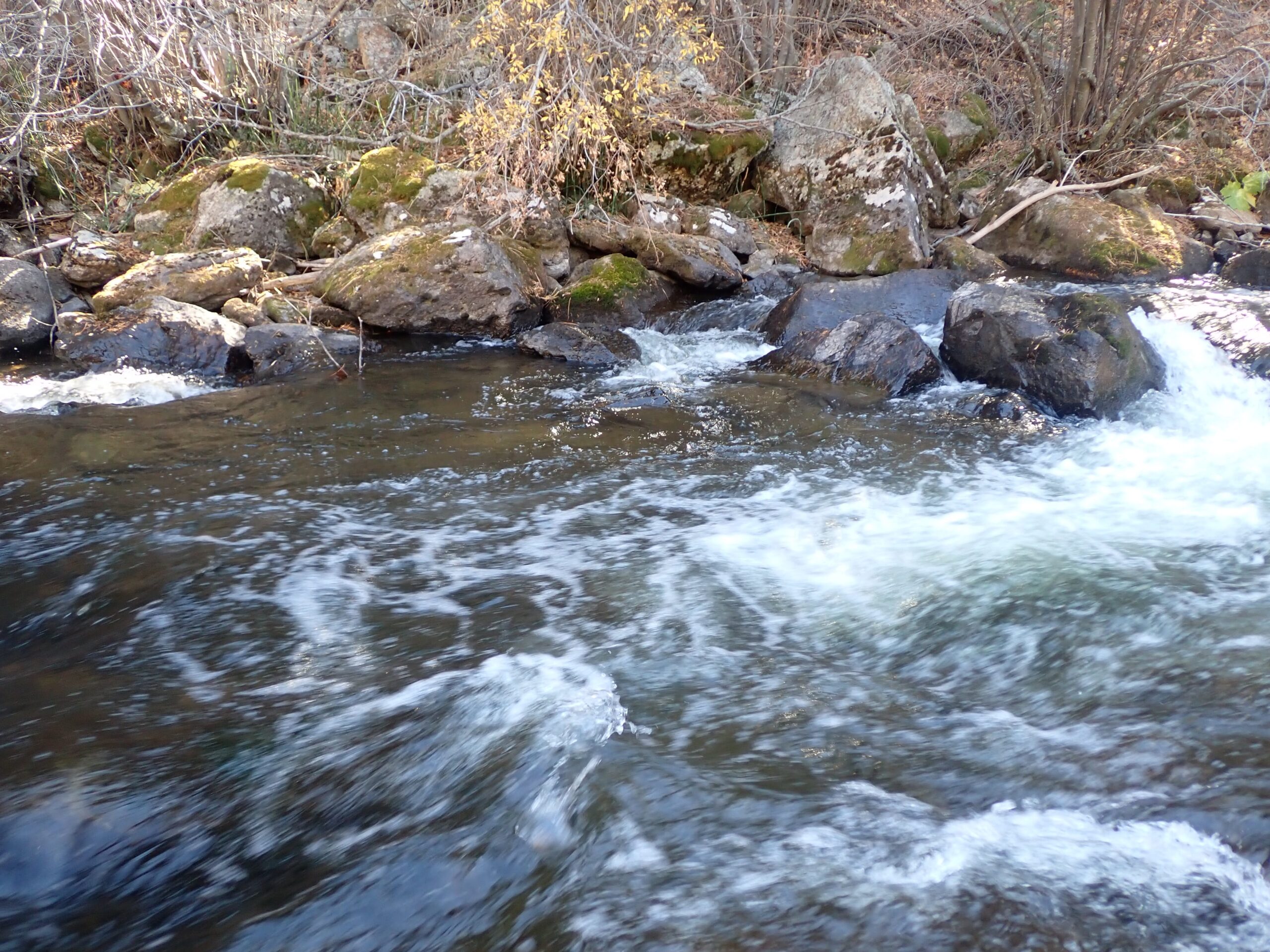 Bank Pocket
Bank Pocket Jake’s Gulp Beetle
Jake’s Gulp Beetle Curled Brown Trout
Curled Brown Trout Black Ghost
Black Ghost Cheech Leech
Cheech Leech Prime Spot Did Not Produce
Prime Spot Did Not Produce Site of First Fish
Site of First Fish Rainbow Kicked Things Off
Rainbow Kicked Things Off Number Two Was This Nice Brown Trout
Number Two Was This Nice Brown Trout Shallow Run Along the Rocks Produced
Shallow Run Along the Rocks Produced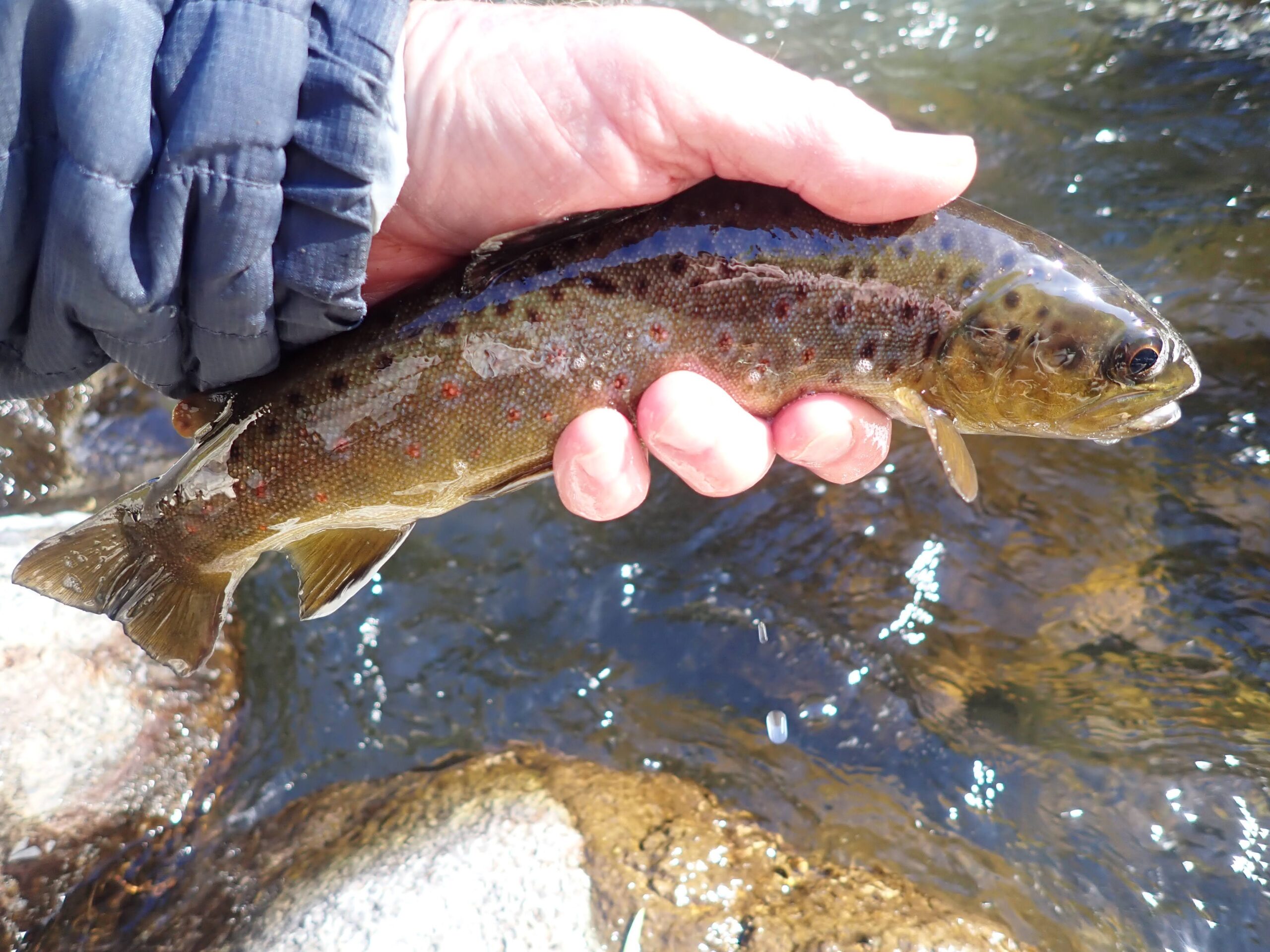 Another Fine Brown Trout
Another Fine Brown Trout Foam Was Home
Foam Was Home Typical Pocket in the Morning
Typical Pocket in the Morning Another Great Spot in the Morning
Another Great Spot in the Morning Right Area Next to the Bank Was Typical of Very Productive Water
Right Area Next to the Bank Was Typical of Very Productive Water Stunning Colors
Stunning Colors Wide Productive Section
Wide Productive Section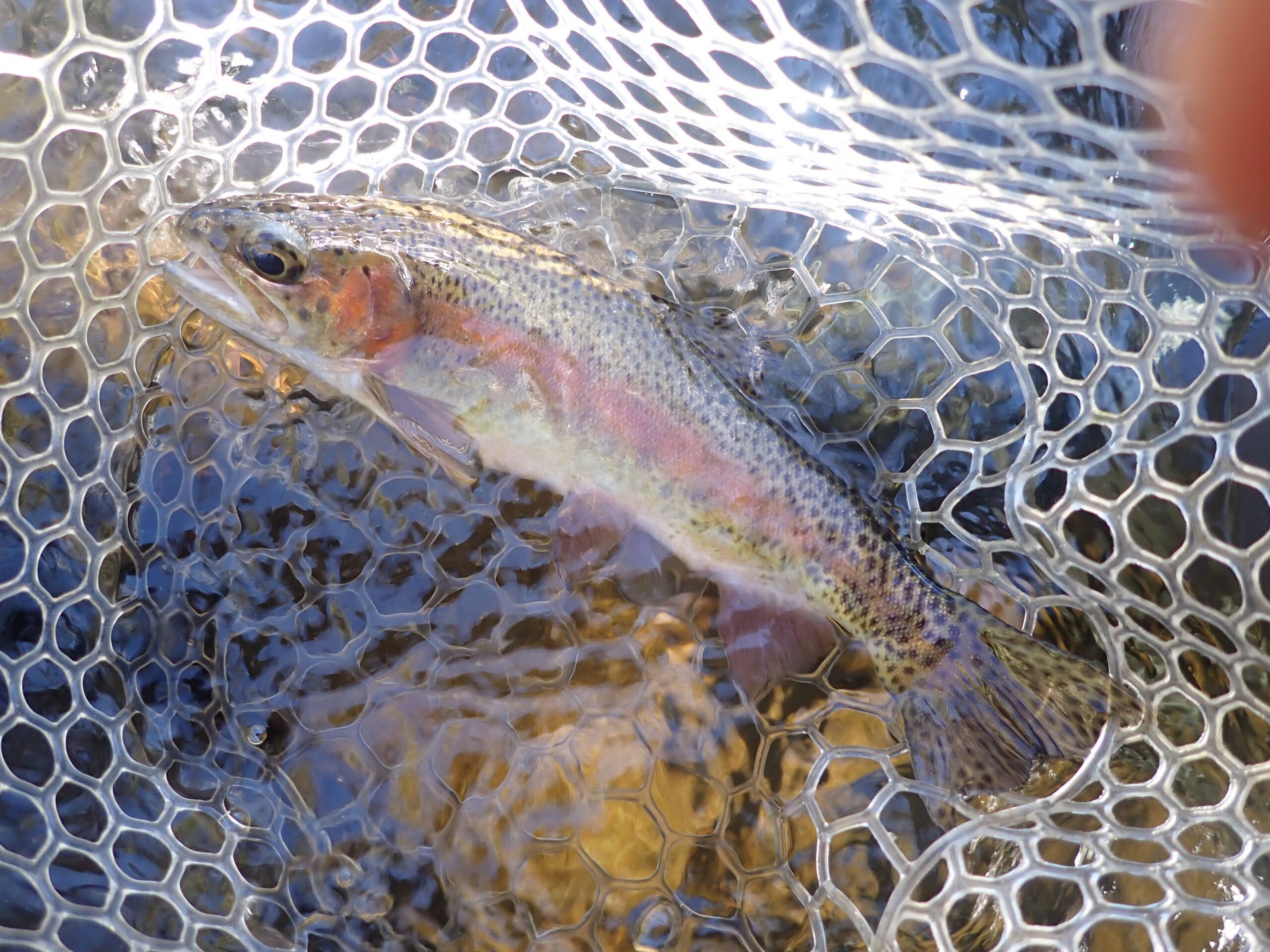 Feisty Rainbow
Feisty Rainbow Long by Tuesday Standards
Long by Tuesday Standards Center Slick Looks Prime
Center Slick Looks Prime Another Nice Spot Along the Bank
Another Nice Spot Along the Bank Near the End of the Day Jewel
Near the End of the Day Jewel Probed Both Sides of the Pyramid Rock on Right
Probed Both Sides of the Pyramid Rock on Right Near the Start
Near the Start
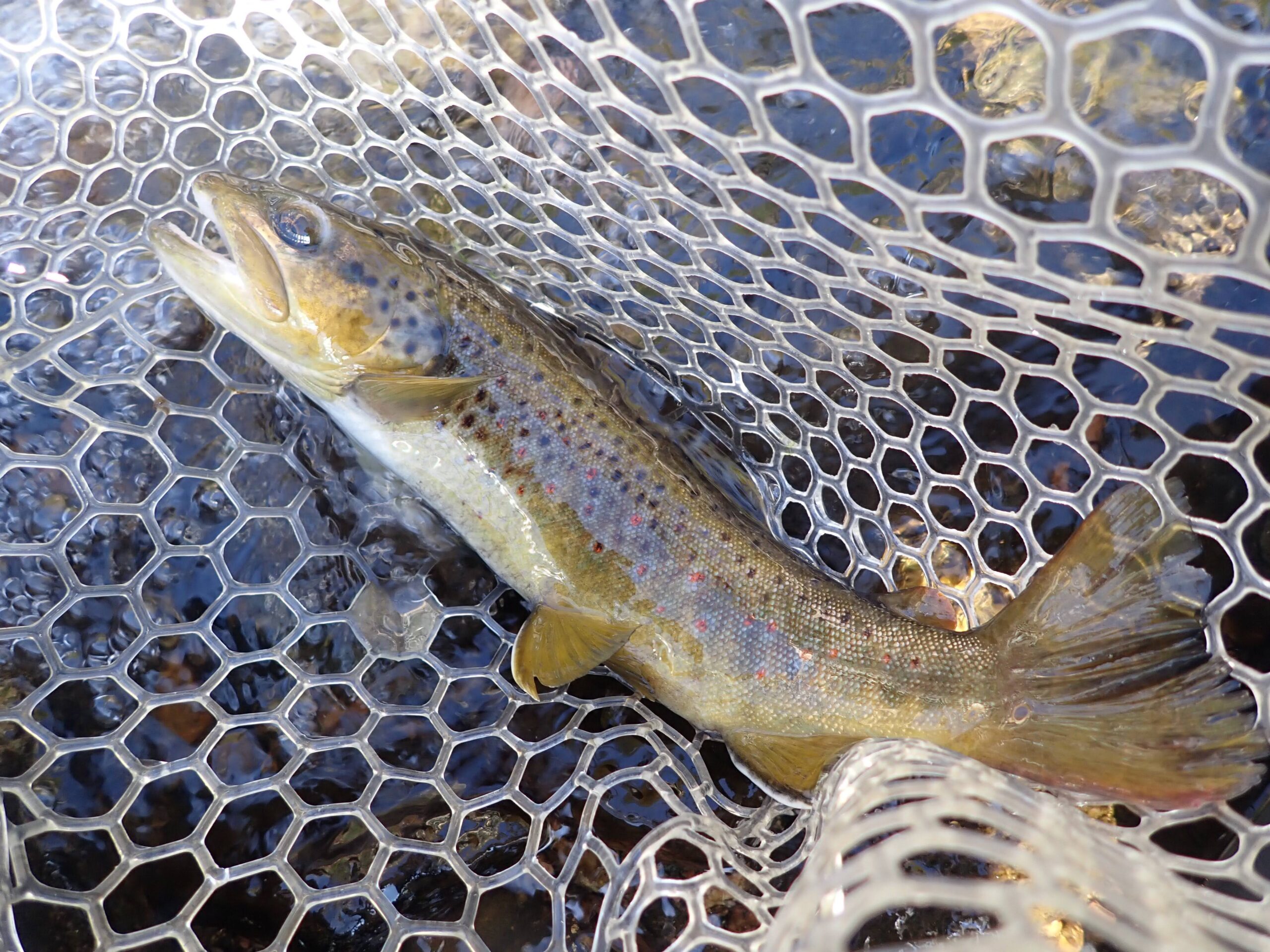 An Early Brown Trout
An Early Brown Trout Best Brown of the Day Came from This Nondescript Spot
Best Brown of the Day Came from This Nondescript Spot Another Respectable Brown Trout
Another Respectable Brown Trout Promising Pool
Promising Pool Makes Up for Lack of Size with Color
Makes Up for Lack of Size with Color Lovely Pattern on This One
Lovely Pattern on This One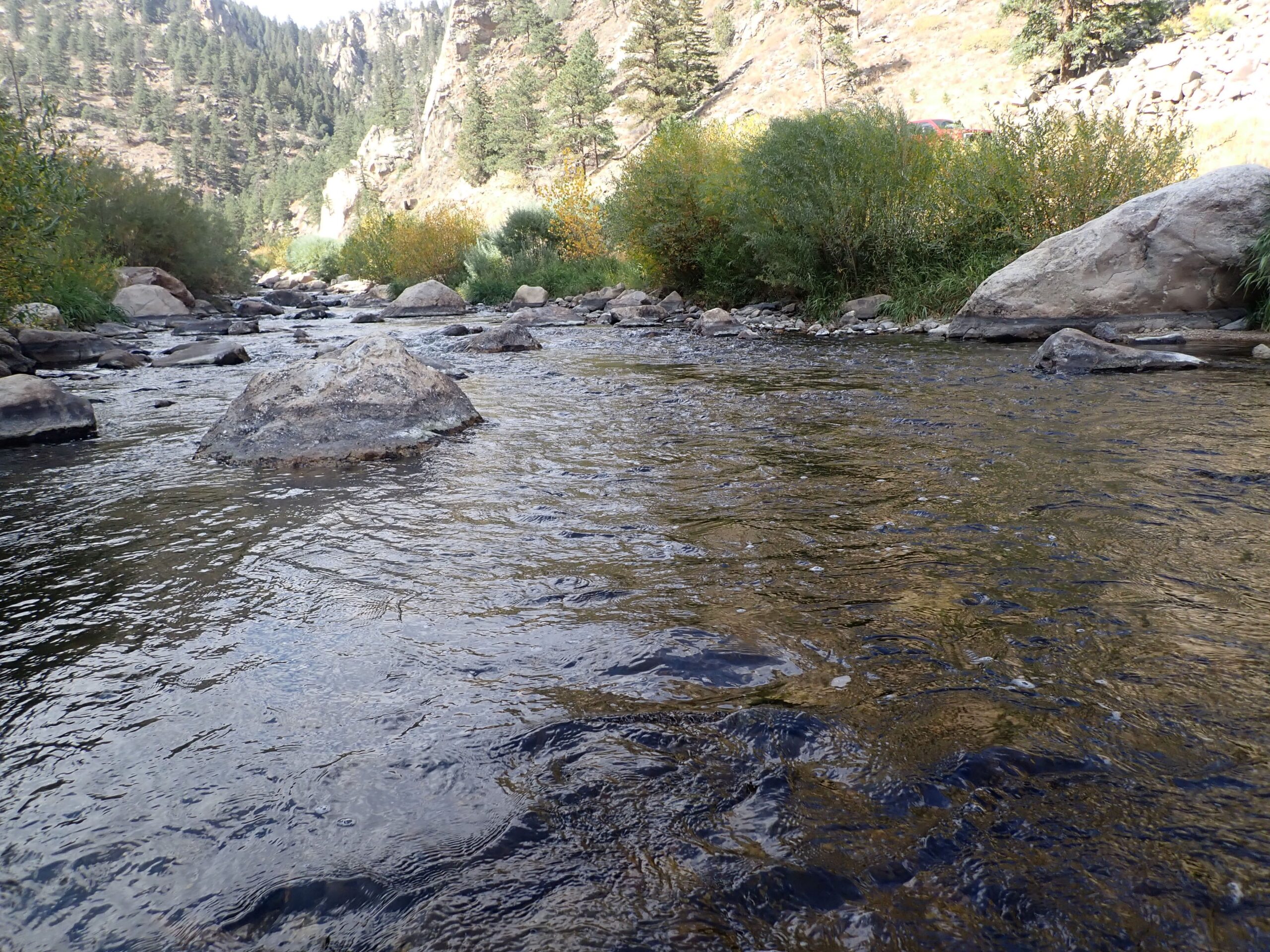 Typically Productive Water Type
Typically Productive Water Type Light Olive Body Background Color
Light Olive Body Background Color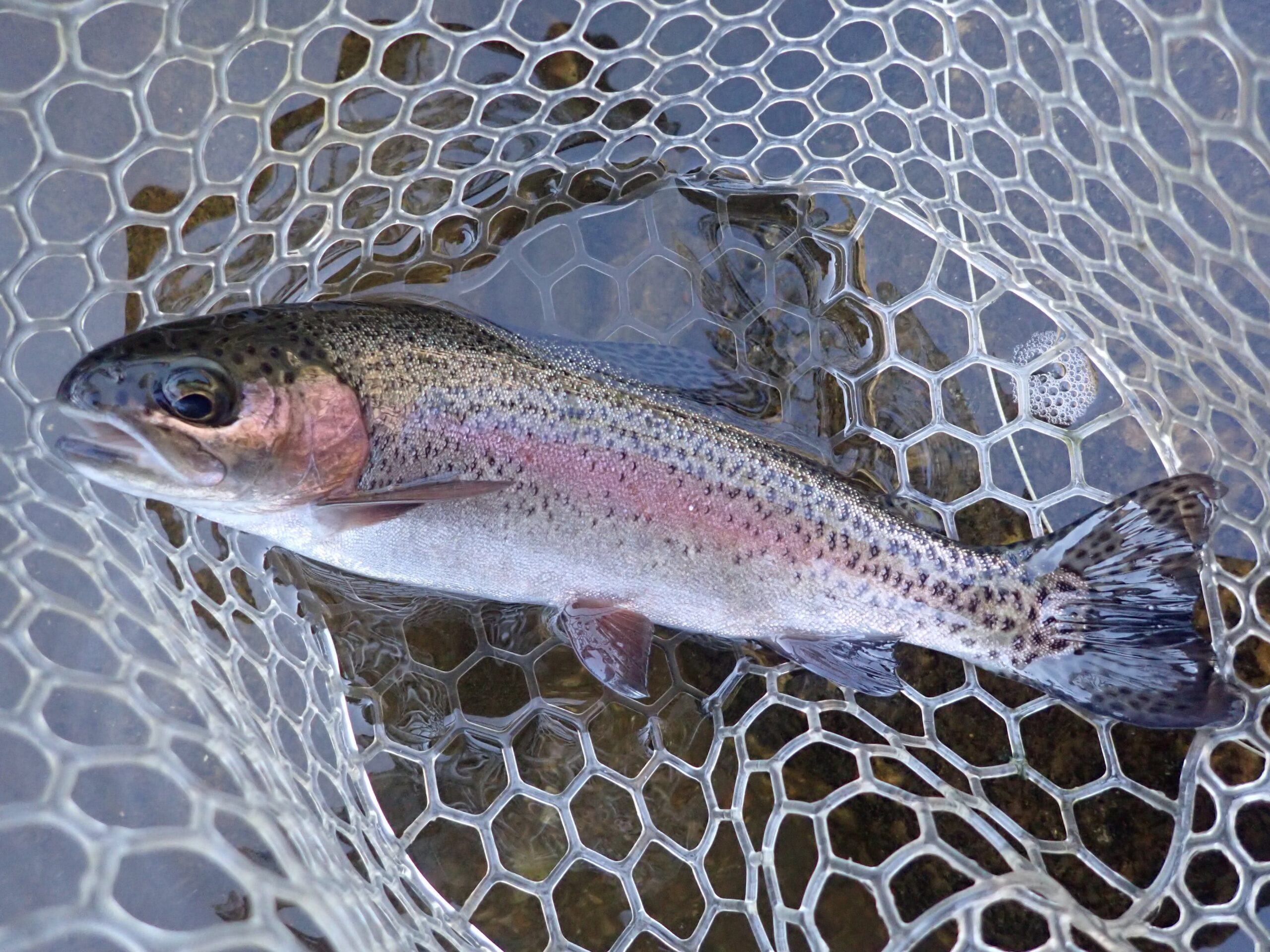 Emphasis on Pink
Emphasis on Pink Deep Spot Between the Rocks
Deep Spot Between the Rocks Pockets Around Exposed Boulders
Pockets Around Exposed Boulders Wide Riffle Area Delivered
Wide Riffle Area Delivered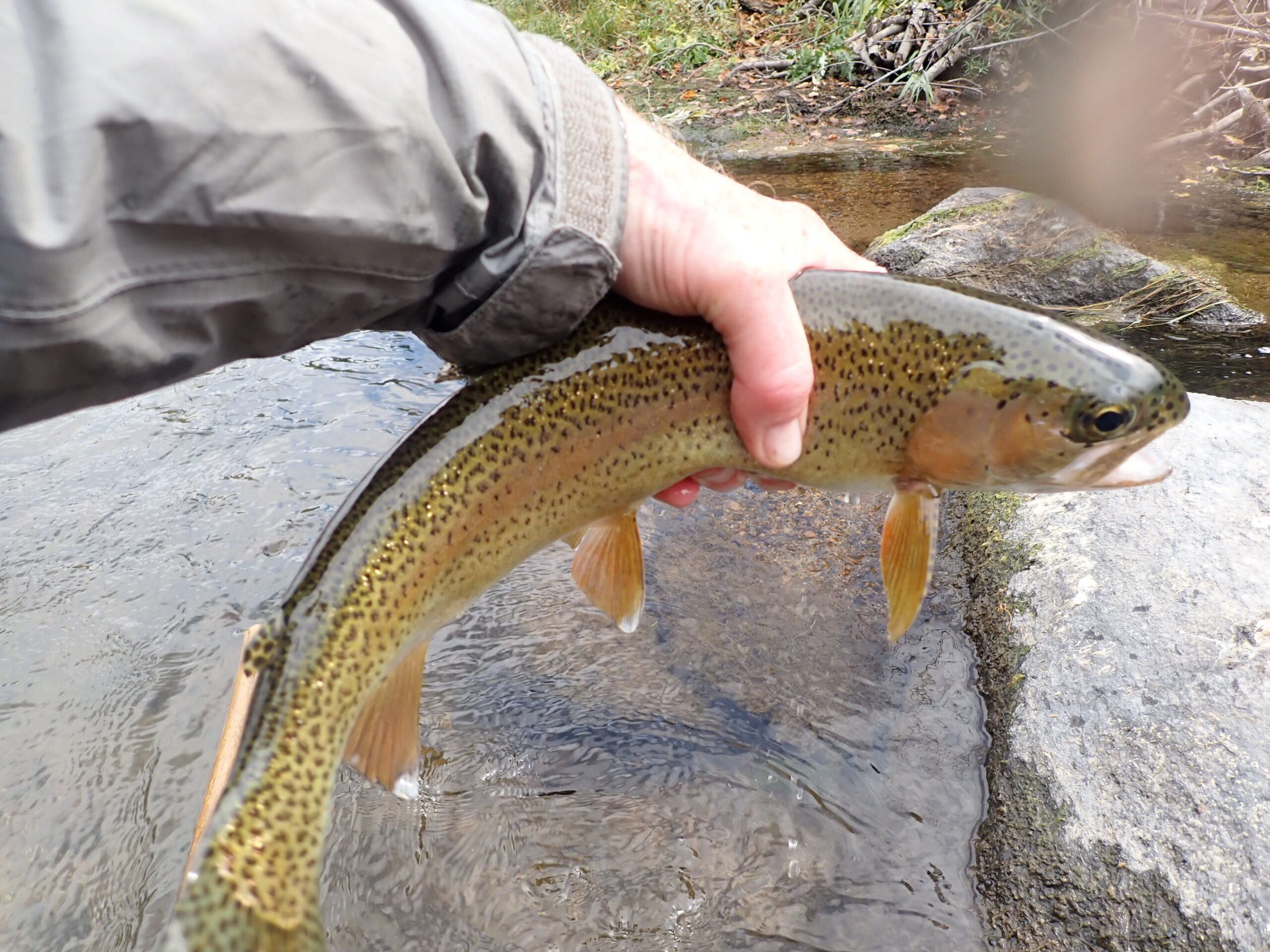 Best of the Day
Best of the Day Second Nice Rainbow Came from This Area
Second Nice Rainbow Came from This Area Headed Home
Headed Home Top of Long, Smooth Pool
Top of Long, Smooth Pool Dry Fly Reward
Dry Fly Reward Chara Coated in Mud
Chara Coated in Mud First and Best
First and Best Source of First and Best
Source of First and Best A Second Nice Rainbow
A Second Nice Rainbow Heavy Whitefish
Heavy Whitefish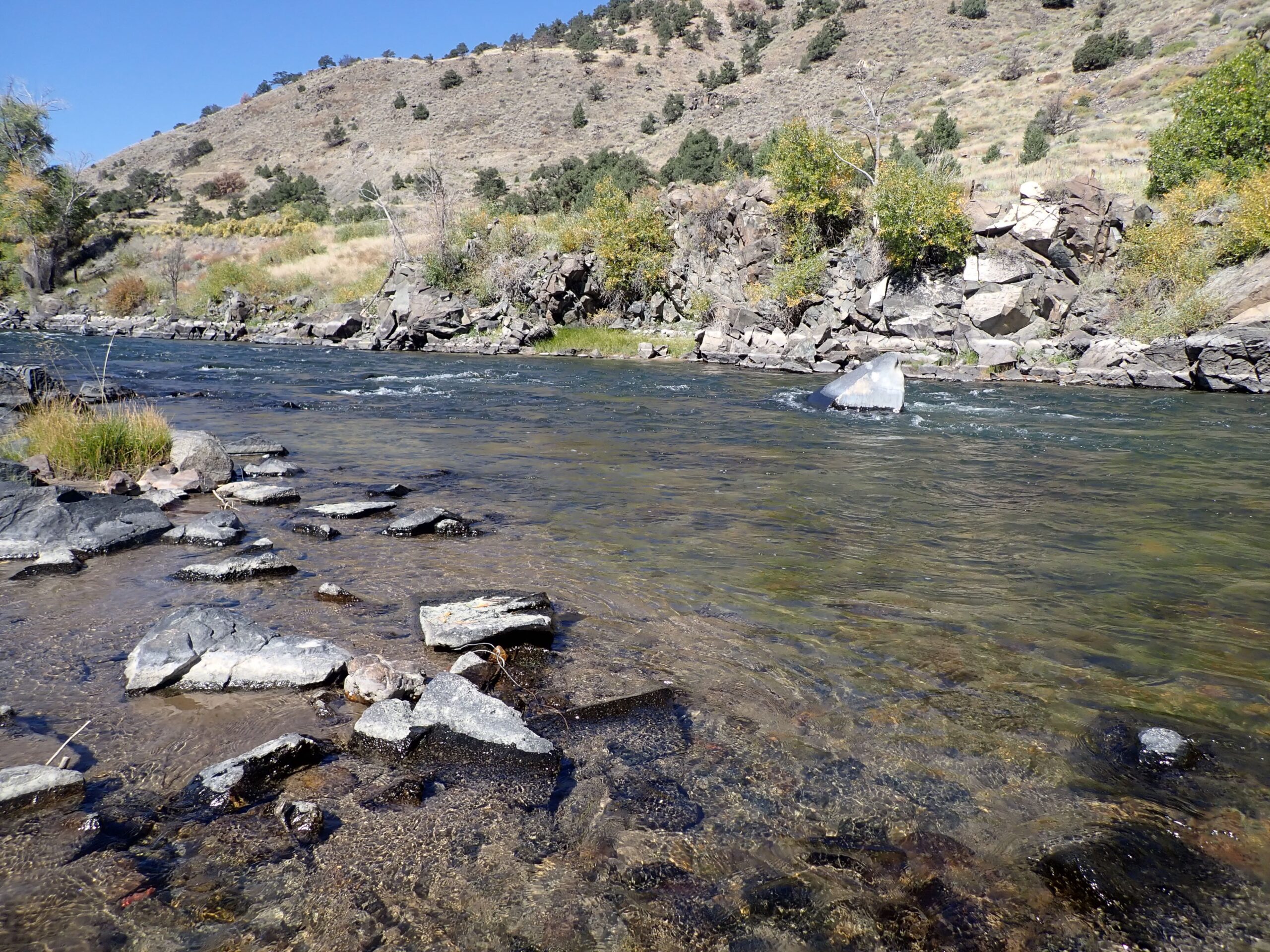 Low and Clear
Low and Clear Hippie Stomper Fan
Hippie Stomper Fan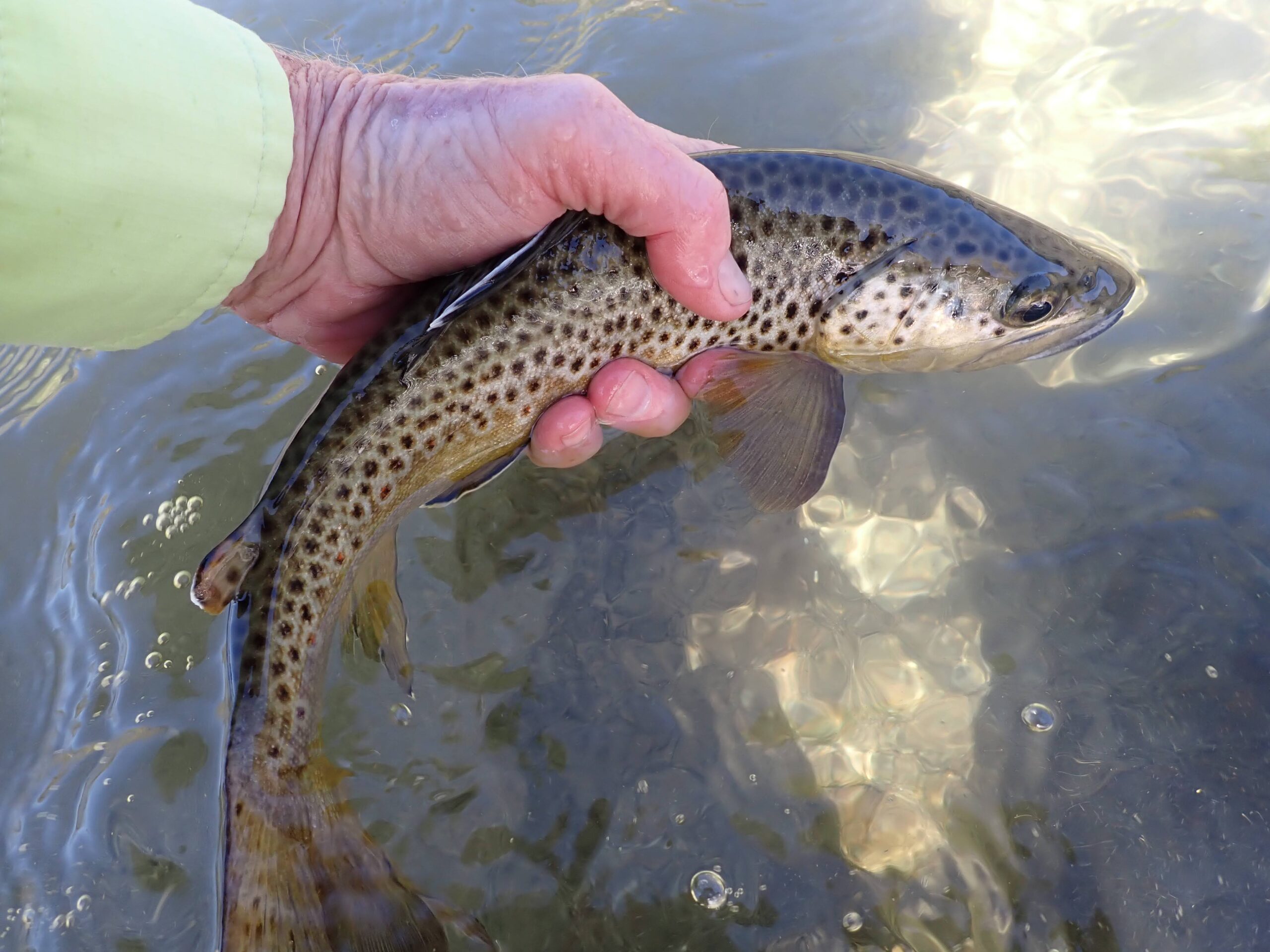 Wild Fish and Bubbles
Wild Fish and Bubbles Site of Rainbow Feeders
Site of Rainbow Feeders Pink and Scarlet
Pink and Scarlet Wide Stripe on Second Rainbow Soft Hackle Emerger
Wide Stripe on Second Rainbow Soft Hackle Emerger